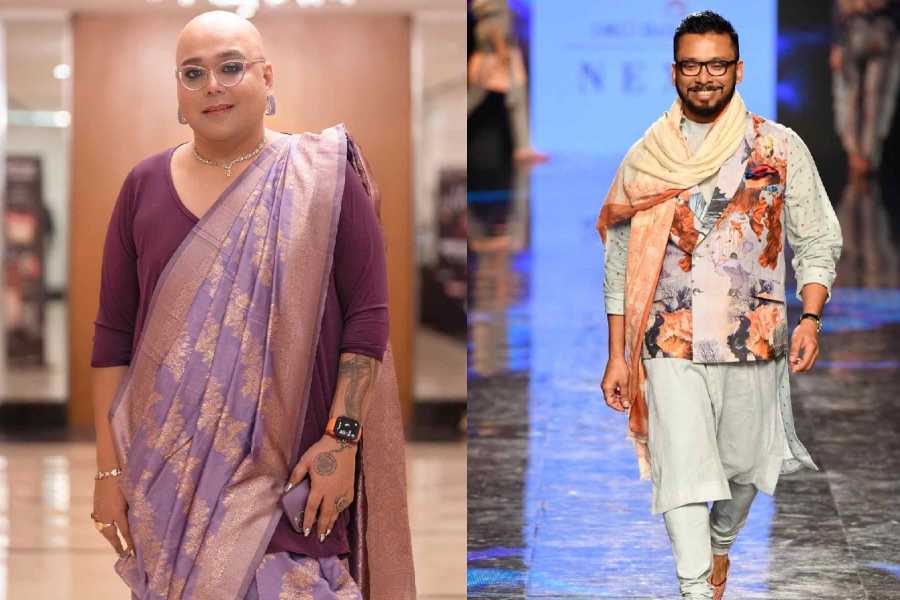Is androgynous fashion just a fleeting trend? Is it restricted to men in saris or confined to high-fashion runways? Is it only celebrities who endorse it?
To find answers, My Kolkata spoke to couturier Navonil Das and social media influencer Indroneel Mukherjee — two voices who’ve helped shape conversations around androgynous fashion in India. Together, they offered perspectives that challenge stereotypes and expand the boundaries of what gender-fluid fashion really means.
Defining androgynous fashion
Androgynous fashion, often used to describe gender-fluid styles, goes beyond traditional binaries. It breaks down socially constructed demarcations, allowing individuals to express themselves authentically without conforming to age-old norms.
For Navonil Das of Dev R Nil, androgyny is rooted in design, not just garments. “It’s about the same item of clothing being worn fluidly,” he explained. “Our prints are the same across menswear and womenswear.”
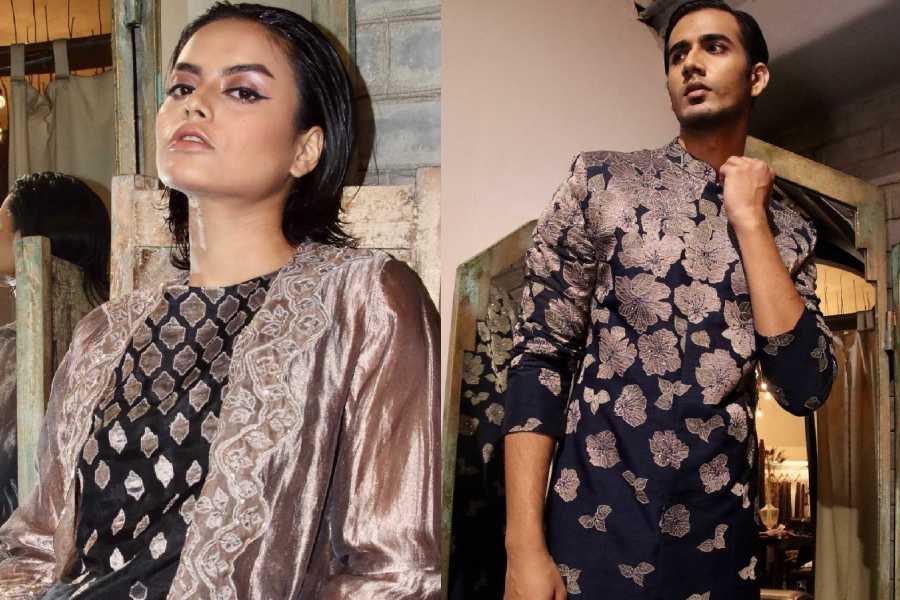
Designs from Dev R Nil Instagram/@devrnil
Das pointed out that what is gaining popularity today was part of his design vocabulary over 15 years ago — “When pink was still the socially accepted colour for women and blue for men,” said Das.
In one of their earliest runway shows in 2008, actress Sonakshi Sinha was the only female model and she was wearing clothes of the same print and design as her male counterparts — a deliberate act to blur gender lines on the fashion ramp — Das recalled.
Mukherjee, on the other hand, views androgynous fashion as a personal and powerful form of non-binary gender expression.
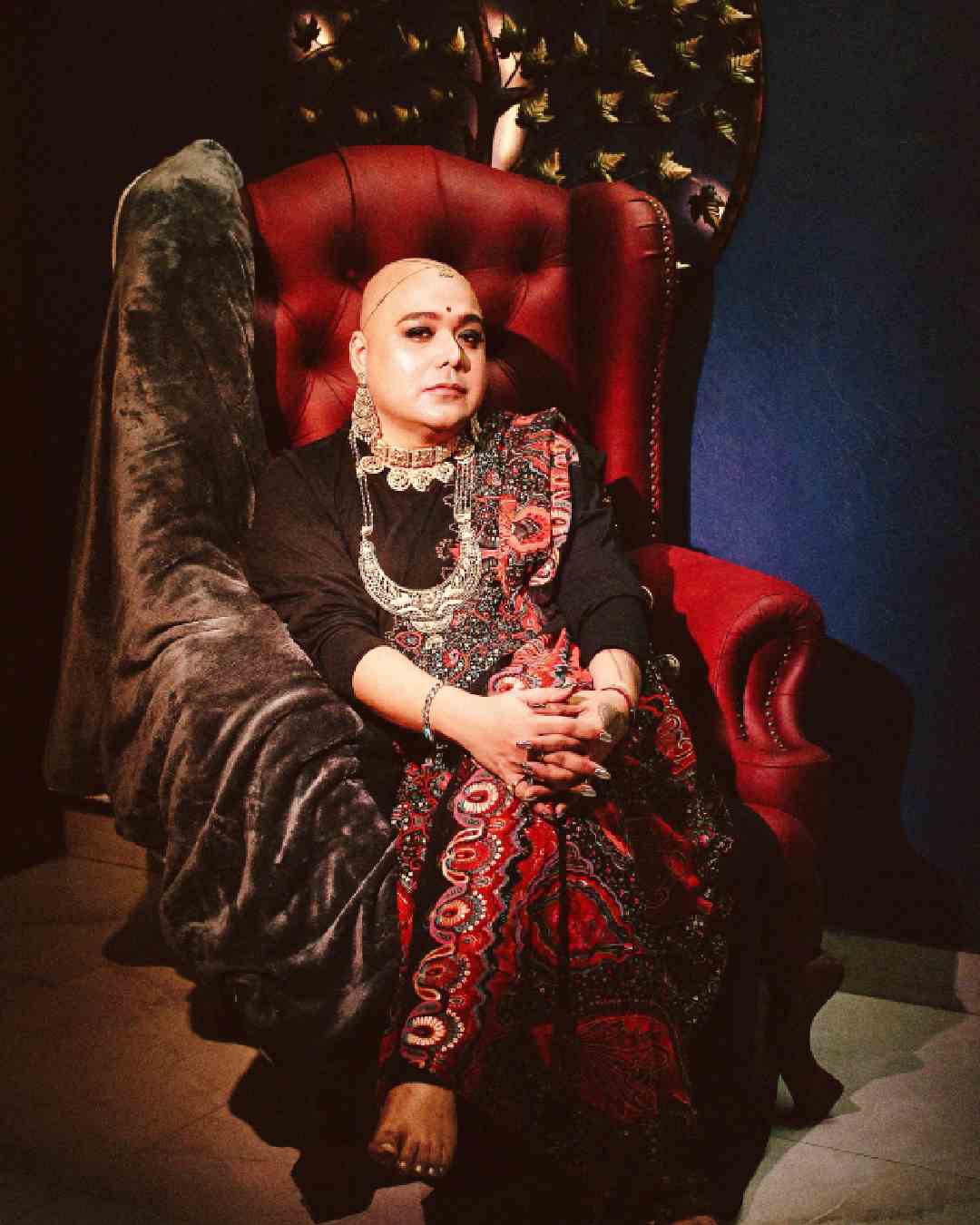
Mukherjee views androgynous fashion as a personal and powerful form of non-binary gender expression
More than just a man wearing a sari: The political fabric of androgynous fashion
For Das, androgynous fashion is not limited to saris alone. Das emphasised that androgynous fashion is about neutrality and shared space. It should be able to empower all genders with equal choice and freedom.
The term androgynous is derived from the Greek words andros (man) and gyne (woman), which symbolises the amalgamation of masculine and feminine characteristics.
However, Das acknowledged the term’s complexities. “I have strong reservations as the term is highly political,” he said. “Sometimes it becomes an excuse for appropriation and encroachment, not empowerment. When a man picks one item from a woman’s wardrobe, say a sari, and claims ownership of it, it risks erasing the woman’s struggle. You’re taking over a space that has been fought for without having lived that reality,” he explained.
For Das, fashion is not just aesthetic, it responds to the socio-political world around him. “Fashion is a statement, a form of protest, or a narration of what’s happening,” he noted.
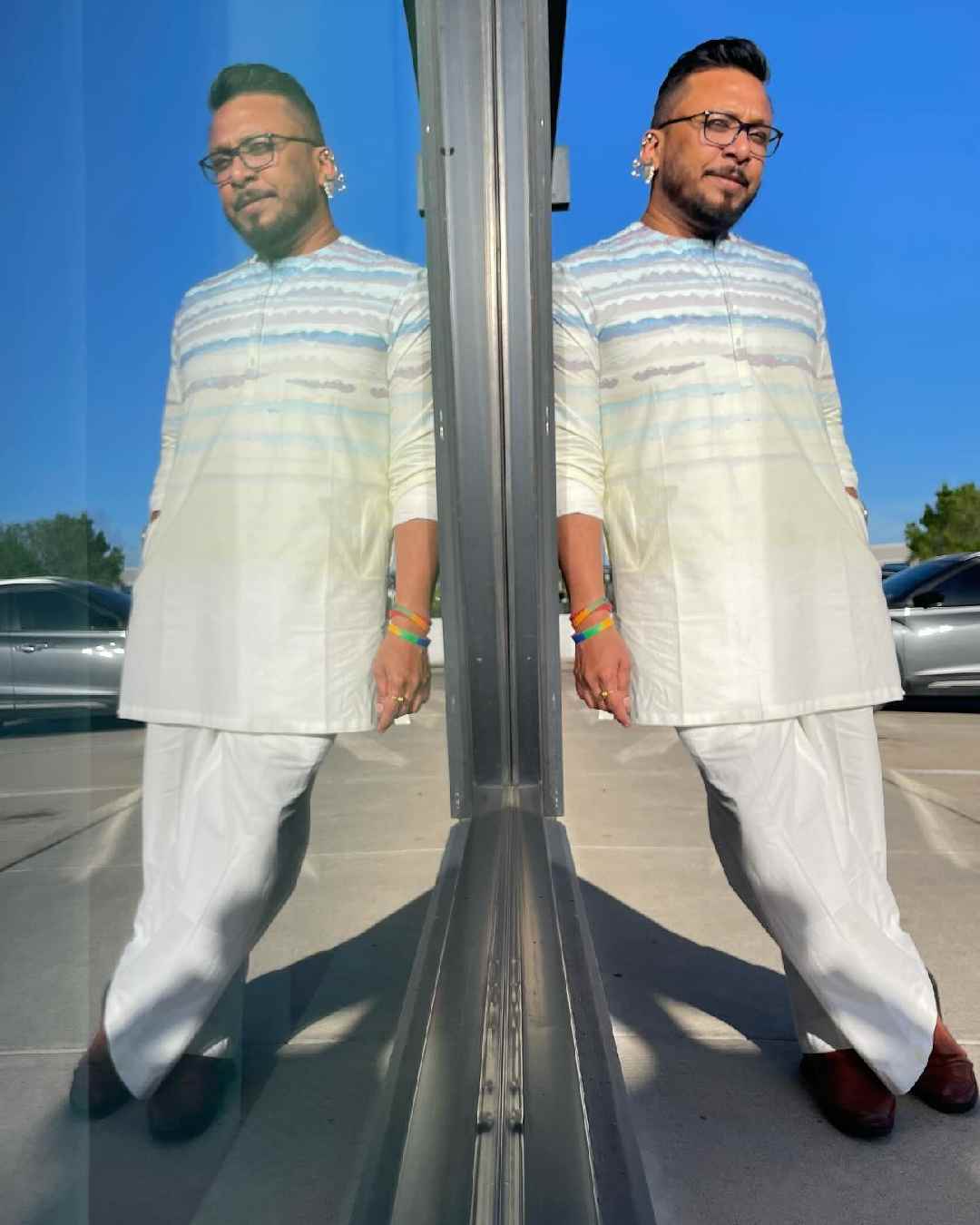
Navonil Das Instagram/@navo_nil
Fashion without labels: Breaking stereotypes, one outfit at a time
Mukherjee, who credits French designer Jean Paul Gaultier as one of his inspirations, said that he personally loves wearing saris. “I think because I’m tall and healthy, saris look amazing on me. They camouflage the parts I don’t like showing. It just feels surreal and beautiful.”
Mukherjee debunked the idea of labelling certain clothes as ‘masculine’ or ‘feminine’. “Sari and dhoti are essentially the same length of fabric — it’s how you drape them that creates distinction,” he said. He recalled the time actor Ranveer Singh wore a lehenga skirt during a promotional event for his 2015 film Bajirao Mastani despite being heterosexual. Mukherjee noted how such moments challenge the misconception that only queer men opt for gender-fluid clothing.
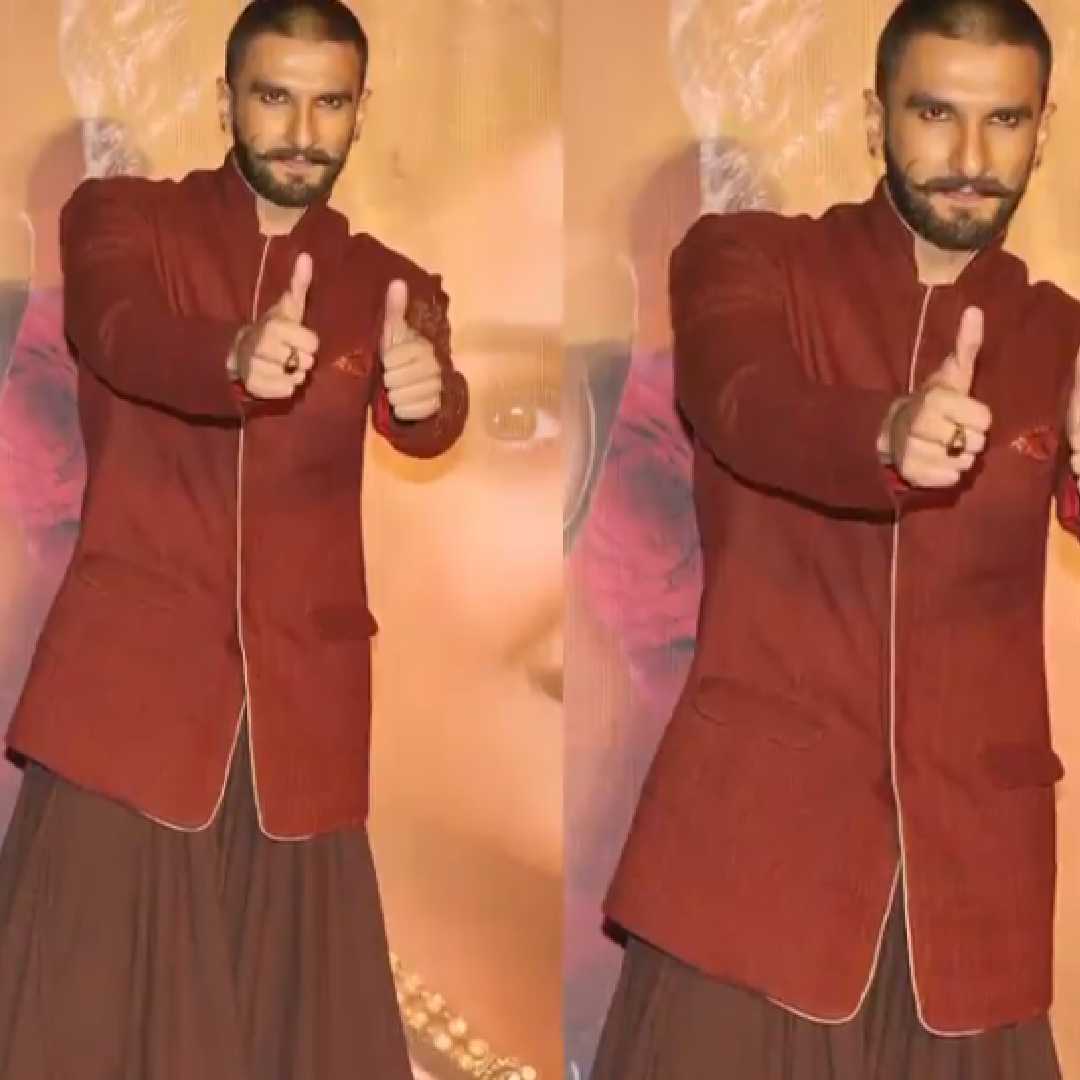
Ranveer Singh in a lehenga skirt Instagram/@myntra
“It’s all man-made — the idea that this is for boys and this is for girls,” he said. He cited the anarkali as an example. Once worn by Mughal emperors, the outfit is now typically associated with women’s fashion.
Confidence over conformity
Addressing the remarks that he had initially been subjected to, Mukherjee said, “It’s about confidence. Initially, people passed remarks, but when I wore it [a sari] with conviction, they got used to seeing me in it. Now, many of them come and compliment me.”
Mukherjee advised budding fashion enthusiasts not to hop on to a trend blindly. “If you feel it in every inch of your being, only then should you do it. If you can carry it with confidence, trust me you’ll rock it,” the influencer added.
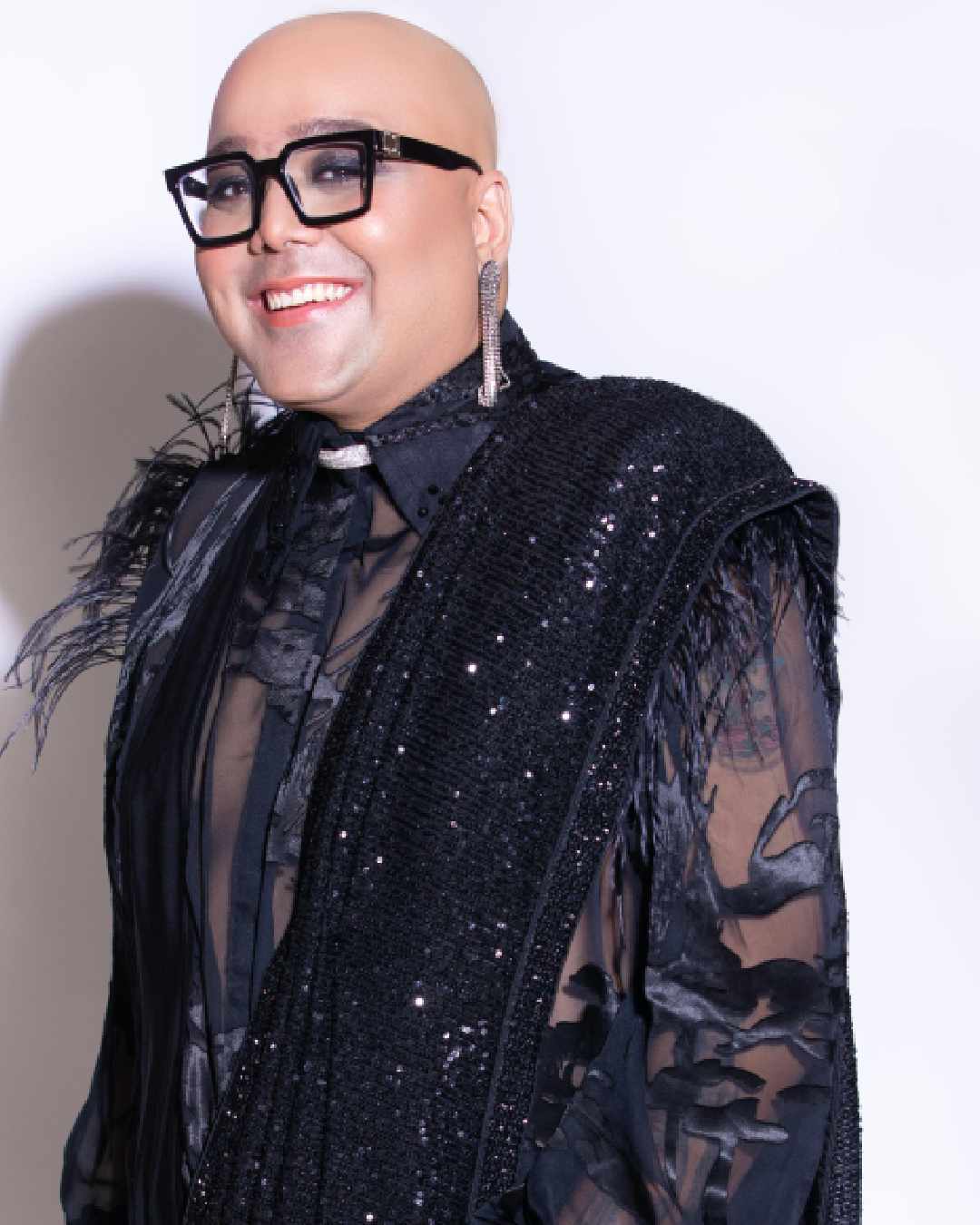
Mukherjee advises fashion enthusiasts not to hop on to a trend blindly
Similarly, Das noted how he sportingly accepts criticism. “Trolls look for a chink in your armour. If you're doing something original and meaningful, it will resonate. Criticism means you've made an impact,” he stated.
